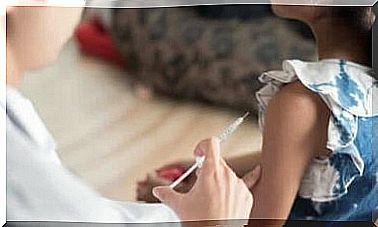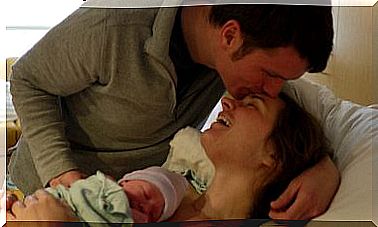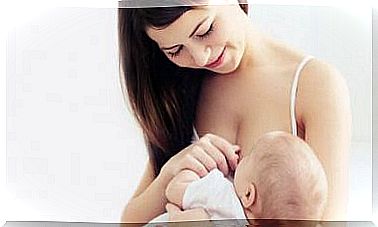Take Care Of A Caesarean Section After Childbirth

Taking care of the wound after a caesarean section after childbirth is not complicated, but regular aftercare is the key to a good recovery.
Because your skin forms scar tissue to heal the wound, it is important to prevent infection and watch out for any complications.
In this article, we will go through some practical tips to take care of a wound after a cesarean section and help your body heal after childbirth.
How a wound after a caesarean section heals
When a new mother comes out of the operating room, she may notice that the incision is covered with a surgical dressing.
During the first weeks after a caesarean section, she needs to pay close attention to this area to see if the incision bleeds or opens.
Women who have had a caesarean section also need to change their dressings regularly to avoid infection.
After a few days, it is no longer necessary to cover the area of the incision all the time. In general, many wounds heal faster when exposed to fresh air.
Bandages can retain moisture, creating an environment where microorganisms and pathogens can thrive.
When the scar forms, it will normally be flat and pink in color. However, about 5% of women develop keloid scar tissue postpartum.
Keloid scar tissue is characterized by abnormal growth of scar tissue, and is more common in people with dark skin tones.
With this in mind, women who have given birth by caesarean section should go for regular check-ups with a good doctor.
A doctor will know how to identify keloid scarring and can offer treatment options to improve the appearance of the scar.
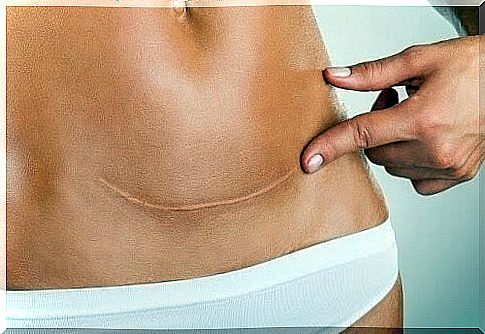
Take care of your skin during pregnancy to help heal a cesarean section after childbirth
To take care of a wound by a cesarean section after childbirth more easily and to prevent keloid scarring, you start preparing while you are still pregnant.
Apply a good moisturizer or aloe vera lotion daily to preserve the skin’s elasticity. This prevents cracking and helps the skin to form scars better after a caesarean section.
You can also adjust your diet during pregnancy to give your skin a boost. Pregnant women need to eat a lot of protein and stay well hydrated.
Including plenty of fruits and vegetables in your diet also helps strengthen your immune system, in addition to all the other benefits they bring.
Care of a caesarean section after childbirth: daily hygiene
Cleaning scars every day is essential to prevent infection. Wash the area with warm water and a mild soap with very gentle movements.
Stay away from perfumed shower soaps, exfoliating creams and antibacterial soaps, all of which can irritate the skin.
After washing and rinsing thoroughly with plenty of water, be sure to dry the area thoroughly. Moist skin can be a great place to grow for bacteria and other pathogens. Carefully patch the area with the incision with clean gauze bandages.
When washing and drying the wound, avoid any sudden movements that tighten your abdominal muscles. Any impact or strain on this area may complicate the healing process.
Leave the scar without a bandage to speed healing
Bandaging a wound creates a humid microclimate in the area, which slows down the healing process in addition to giving microorganisms an ideal place to grow.
The longer you can leave your scar to air, the easier and faster the healing process will be.
If you need to go out, the clothes may rub against the area and cause irritation. Use a simple gauze bandage and hypoallergenic medical tape to prevent this.
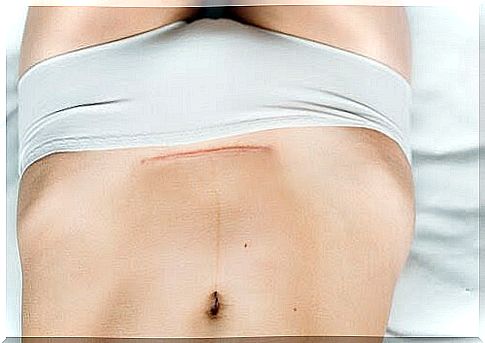
Wear soft cotton clothes
During the healing process, you will be more comfortable in soft, light clothes, preferably made of cotton. Thick clothing and artificial fabrics can retain moisture in the abdominal area and expose the wound to microorganisms.
If the weather is cold, wear a cotton top as a base layer and then layer with warmer clothes on top.
The key is to make sure that any fabric that comes in contact with the skin does not affect scarring or cause an allergic reaction.
All women are unique, and all bodies heal at their own pace. When caring for a cesarean section wound after childbirth, pay attention to your own needs and listen to your body.
Your first contact person should be your doctor. A knowledgeable doctor will give you guidelines for the period after delivery so that your body can recover.





